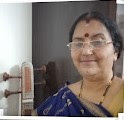Bombay S. Ramachandran
- Issue 199
- Published By Sruti
₹70.00
Special Feature

Senior musicians are often found criticising other musicians for incorrect renderings of raga-s. Likewise, critics and scholars frequently fault some musicians for performing a raga improperly. The discerning listener often feels bewildered. Every objection raised cannot be valid; nor can every objection be invalid. Some efforts towards developing a rational viewpoint on the subject of raga authenticity are, therefore, in order. Let us make a beginning. As a backdrop to this debate, we must appreciate the socio-economic context in which music practice evolved upto the 19th century. The major seats of musicianship were the courts of the feudal aristocracy, which patronised great musicians. These principalities were isolated from each other by primitive modes of transportation, as well as means of communication. This was an era without radio, without telephony, and without mass-distributed pre-recorded music. Very few musicians knew what precisely others, just a couple of hundred miles away, were singing.
Special Feature

Manodharma, especially in raga alapana, hinges to a large extent on a sequence of musical concepts that have been tried and tested through the ages. The standard format of alapana currently in vogue stipulates gradual progression to the tara sthayi and back, introduction of fast passages at certain junctures and so on, within which manodharma must be contained. Students of Carnatic music are aware of these aspects. What then constitutes manodharma in raga alapana? Improvisation seems to lie more in the juxtaposition and arrangement of the phrases, the deft touches, modulation and bhava that the artist imbues them with, and the tone and timbre of his voice which inevitably moulds his style. It presupposes talent, erudition, hard work, and an innate sense of propriety.
Main Feature

The keys to learning in the gurukula system certainly seem to have been patience and alertness. Ramachandran continues: Chitoorar was also a great laya vidwan. In fact he would sing even the sarali varisai in khanda nadai (pulse of five beats). However, he would not explain what he was doing. Not daring to ask him I would just try and imitate. While such methods of teaching-learning ensured there would be no laxity on the part of the students, a fallout of it was that the student never really gained a complete understanding of the subject. In addition, it also created an unfulfilled longing in the mind of the trainee.
